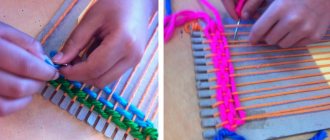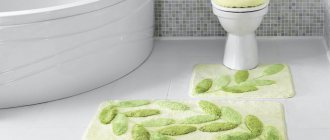Purpose of center finders for milling machines
The main task of this tool is to align the base point of workpiece processing with the spindle axis. This can be not only the center of the part, but also any area that needs to be milled.
Special equipment is used to process large parts. In addition to the milling machine, portable radial drilling machines are used to determine the center. However, for small piece products this approach is not possible. The best option is to install a center finder on the spindle head.
This additional equipment will allow you to perform the following operations with high accuracy:
- milling the center of the part to form recesses of various configurations;
- production of channels on the end part. The center finder will determine the distance from the processing area to the center with maximum accuracy;
- performing radial drilling operations for complex workpieces whose surface curvature consists of several radii.
Center finders are not included in the standard equipment of the machine. Performing standard operations is done using factory models. If mass processing of complex workpieces is required, the device for determining the center is made to order.
How the tool works
The shank is inserted into the tapered hole of the spindle mechanism of the jig boring machine. For precise work without vibration, the tail part of the head must exactly follow the contours of the spindle. After installation, the tail section is fixed with a standard machine screw. According to the requirements of processing technology, the workpiece must be carefully fixed in a stationary position to avoid displacement during boring operations. This position allows the head to accurately perform its functions with minimal risk of defects.
When processing small holes, the diameter of which does not exceed 40 mm, the position of the cutters is adjusted only by moving the slide.
DIY center finder
Often, when working with carpentry, you are faced with the problem of finding the center of a round part, be it the end of a log or a sawn blank, a lid...
In order not to have to worry about markings every time, I suggest making a simple center finder with your own hands from a board and a strip of metal.
The drawing and manufacturing procedure are clear from the photo below.
But I will add about manufacturing. Let me start with the fact that firstly, this dual-purpose center finder, in addition to searching for a point in the center of a circle, it can also draw them (it has a number of drilled holes for different radii)
For production you will need: - 20 mm board or plywood. thickness. — Metal strip 3*25*305 mm. - Three self-tapping screws - And a tool - a ruler, a pencil, a hacksaw, a drill, a screwdriver.
1. Take a 20-gauge board or plywood. In the drawing there is a 19-piece because the part is polished. Next, we draw and cut out the required shape - see the picture.
2. Now let’s move on to a strip of metal , it’s better, of course, if it’s aluminum, it’s easy to work with - it’s easier to process. In general, we cut off a strip 30.5 cm long and 25 mm wide. If there is no suitable one, then cut it out of the sheet using a grinder.
How to make a center finder for round parts
Hello, dear readers and DIYers!
Surely many of you have had the opportunity to mark centers on round workpieces, and you know various techniques for performing this operation. In this article, the author of the YouTube channel “Mistry MakeTool” will tell you how he made a simple device for marking centers and circles on round workpieces.
This tool is very easy to make and can be repeated at home.
Materials. — Sheet steel — Miniature bearings — Bolts, washers, M8 wing nuts — Sandpaper, acetone, spray paint.
Manufacturing process. The author will use sheet steel 1.5 mm thick as the material for the body of this tool. Instead, almost any sheet material, thin plywood, plexiglass, textolite will do...
On a rectangular sheet, the author steps back 3 inches from the edges in one of the corners, and cores the center.
All that remains is to drill a hole with a diameter of 1 mm in the center of the workpiece and countersink it.
After this operation, all surfaces of the workpiece are cleaned with sandpaper, degreased, and coated with aerosol enamel in two layers.
The device is ready, and the first test subject will be a piece of round steel.
Having fixed it in a vice, the author installs a center finder on the workpiece and presses the bearings to its edges, trying to do this evenly, focusing on the marks.
Good mood, good health, and interesting ideas to everyone!
The author's video can be found here.
Source
Homemade center finder: manufacturing process in detail
3 weeks ago I saw a center finder on a chipmaker made by the user Starik. I set out to make the same one. For more convenient work.
Sketches were made using the available 3D images and work began.
1. Probe with contacts
The probe with the ball is machined from 12x18n10t (stainless steel), it is mounted in a caprolon tee on an M4*0.7 thread. Contacts with a diameter of 3 mm are also made of stainless steel and are tightly seated in the holes of the tee. It is better to drill holes for the contacts with a 2.9mm drill. In any case, the hole will be slightly broken and the contacts will fit tightly. On the side of the tee that we cannot see there is a cylinder with a diameter of 5 mm. 1mm high. to hold the spring
The spring is made of OVC with a diameter of 0.4 mm. No lathes were used for coiling. Only a drill with a diameter of 4.8 mm and a vice. It is better to remove the flats at the ends of the spring so that these flats lie in parallel planes. This will increase reliability.
Made of plexiglass, diameter 35mm. Threaded holes for attaching a cover made of D16T. Holes with counterbore for position adjustment screws (edge finder adjustment) Recesses at 120 degree angles. for stainless steel contacts Through hole with a diameter of 2.8 mm in the center for installing a ball with a diameter of 3.2 mm on the side of the case that we cannot see
Holes with countersink for M3 mounting screws Holes without countersink with a diameter of 3.2 mm so that a wrench can be inserted for adjustment
Fastening cylinder 25mm long with a diameter of 8-0.02mm M3 holes for adjusting screws A blind hole in the center with a diameter of 2.8mm for installing a ball with a diameter of 3.2mm. The ball is used as a support when adjusting the center finder
6. Printed circuit board
Scheme
Made by LUT from one-sided textolite
Parts list of SMD parts:
1. single Schmidt trigger 74ahc1g14 2. output field switch - 2N7002 3. resistors next to the LEDs 300 Ohm 4. 2 multi-colored LEDs 5. resistor 5-10 kOhm 6. capacitor 0.1 uF
!Important! Do not under any circumstances use copper-plated balls from hunting stores! I used 3mm diameter balls. from bearings.
And a photo of the finished center finder
_______________________________________________________________________________
We've sorted out the hardware, let's move on to the software part
1. I didn’t need the offline button in Mac anyway, so I redid it
2. To work with the center finder, I wrote my first script script
3. After finding the center and zeroing the X and Y coordinates, 2 such messages are displayed with the hole lengths in X and Y
The hardware is ready, the script is written, let's try it
A small addition: It’s better not to use the same wire as mine to connect. Buy wires with connectors for connecting servos at some ship/aircraft/automotive store, connect the connector as mono closer to the device - it will be both beautiful and convenient.
cnc-club.ru
Homemade centroid: manufacturing process
Homemade centroid: manufacturing process
CNC-Logic » Mar 15, 2013, 11:29 am
3 weeks ago I saw a center finder on a chipmaker made by the user Starik. I set out to make the same one. For more convenient work.
Sketches were made using the available 3D images and work began.
1. Probe with contacts
The probe with the ball is machined from 12x18n10t (stainless steel), it is mounted in a caprolon tee on an M4*0.7 thread. Contacts with a diameter of 3 mm are also made of stainless steel and are tightly seated in the holes of the tee. It is better to drill holes for the contacts with a 2.9mm drill. In any case, the hole will be slightly broken and the contacts will fit tightly. On the side of the tee that we cannot see there is a cylinder with a diameter of 5 mm. 1mm high. to hold the spring
Purpose of center finders for milling machines
The main task of this tool is to align the base point of workpiece processing with the spindle axis. This can be not only the center of the part, but also any area that needs to be milled.
Special equipment is used to process large parts. In addition to the milling machine, portable radial drilling machines are used to determine the center. However, for small piece products this approach is not possible. The best option is to install a center finder on the spindle head.
This additional equipment will allow you to perform the following operations with high accuracy:
- milling the center of the part to form recesses of various configurations;
- production of channels on the end part. The center finder will determine the distance from the processing area to the center with maximum accuracy;
- performing radial drilling operations for complex workpieces whose surface curvature consists of several radii.
Center finders are not included in the standard equipment of the machine. Performing standard operations is done using factory models. If mass processing of complex workpieces is required, the device for determining the center is made to order.
The basis of the tool is a corner
To make it you will need an ordinary construction corner. It costs pennies at any hardware store. The master found it surplus and will use it.
Electrical tape is needed to ensure that the cut is as smooth as possible.
To avoid injury, we smooth out all sharp corners and edges. We take a two and a half millimeter drill and make three holes. It is advisable to do all this carefully. If you have a machine, then use it better.
We apply any solvent that is available to the cotton wool and degrease it. You need glue to hold everything securely in place. Add a little water, since the stainless steel from which the homemade center finder will be made is quite difficult to drill. We will use the same drill for two and a half mm.
Types of center finders
Before choosing the optimal center finder model for the machine, it is necessary to determine the required accuracy parameters. However, it should be taken into account that the smaller the error, the greater the complexity of manufacturing one part.
Experts do not recommend the use of homemade center finder models. They will not be able to provide adequate measurement accuracy. The best option is to purchase a factory design that complies with regulatory documents - GOST 25827-93.
With indicator
The design of the indicator center finder consists of a cone-shaped mounting unit attached to the spindle head. There is a horizontal rail on it, along which the position meter moves relative to the center of the part. It is an indicator in contact with a spring-loaded lever.
The advantage of an indicator center finder for a machine tool is its high measurement accuracy. To perform the work, it is mounted on the spindle head. It must have the function of changing its position along the x axes; y. After installing the device, an initial determination of the center of the part is performed. Then the position of the spring-loaded lever changes, it rests against the measured edge of the workpiece. The required degree of change in the location of the spindle head is determined by the indicator.
Features of the design:
- maximum measurement accuracy;
- it takes a lot of time to configure the device to the parameters of a specific part;
- the ability to accurately determine the processing location relative to the center.
You can make an indicator center finder yourself. But to achieve the required accuracy, you should purchase a factory spring-loaded lever and indicator.
The most popular model is CI-03-0.01. Its average cost is 5,000 rubles.
Center finder mandrel
To accurately determine the center of the workpiece, you can use a simplified model of a center finder. It consists of a housing, on the end of which there is a sliding ring. Thanks to the spring, it can change its location relative to the central axis of the vertical body.
During operation, the ring is shifted relative to the center of the mandrel. When the spindle rotates, a beating is visually observed. By changing the position of the part, runout is reduced. This way the center of the workpiece is determined, the maximum measurement accuracy is 0.01 mm.
The disadvantage of this technique is the limitation on the shape of the parts. It is also impossible to determine the center when measuring the sides internally or externally.
Optic
The optical type of the center finder allows you to enlarge the marking lines marked on the surface of the part. For this purpose, the design provides a lens system, one of which has a crosshair.
Such models are designed for milling microscopic elements. To determine the processing location, the crosshair on one of the lenses must coincide with the marking lines on the part. Then the center finder is removed from the spindle and a cutter is installed in its place.
The video shows the operating instructions for the indicator model of the center finder:
Part design and operating principle
In general, the boring head allows you to place either one or several cutting elements at once, however, it is recommended to resort to the optimal design with two radially spaced teeth, since this:
- Helps balance the radial component of the cutting force, which has a positive effect on accuracy;
- Significantly reduces the flow of vibration coming from the tool;
- In principle, it has a positive effect on the dynamics of the boring process.
At the same time, increasing the teeth will not have a positive effect on the work, since this entails a complication of the entire structure, plus, it makes it impossible for the operator at the machine to work at high speeds (fraught with the appearance of defects).
The boring head is fastened in the machine spindle (on the main executive body of the milling machine, that is, essentially, a rotating shaft that transmits force from the machine engine), while the part body is firmly fixed using a nut (or a group of nuts, or using micrometric screws).
The main components of the design of such equipment are the following parts:
- The hub is the central part of the equipment with a small hole that is necessary for mounting on the torque element. The mounting location for this part is the shank, described below, fastening is carried out through four screws, two of which additionally connect the quill;
- A quill that secures the cutting element;
- A slider, which is a moving part inside the quill along two guides using a lead screw. With its help, you can adjust the position of the cutting component relative to the center of the existing hole;
- Tapered shank that precisely fits the front spindle bore. Through this part, rotation is transmitted to the tool.
The process of working with the boring head is as follows:
- The shank is inserted into the spindle (into the cone-shaped hole), after which it is tightened with a screw to ensure tightness;
- After this, the part must be firmly installed in a vice or some other similar equipment;
- If it is necessary to bore a hole of less than 40 mm, then the position of the cutting component is adjusted only using a slider;
- In the case of boring a hole with a larger diameter (up to 85 mm), you should first repeat what was described in the paragraph above, after which the slider should be moved to its initial position, loosen the fastening screws and move the quill into the hub until it stops.
Below is a video of preparing the boring head for work and its direct use.
Purpose of center finders for milling machines
The main task of this tool is to align the base point of workpiece processing with the spindle axis. This can be not only the center of the part, but also any area that needs to be milled.
Special equipment is used to process large parts. In addition to the milling machine, portable radial drilling machines are used to determine the center. However, for small piece products this approach is not possible. The best option is to install a center finder on the spindle head.
This additional equipment will allow you to perform the following operations with high accuracy:
- milling the center of the part to form recesses of various configurations;
- production of channels on the end part. The center finder will determine the distance from the processing area to the center with maximum accuracy;
- performing radial drilling operations for complex workpieces whose surface curvature consists of several radii.
Center finders are not included in the standard equipment of the machine. Performing standard operations is done using factory models. If mass processing of complex workpieces is required, the device for determining the center is made to order.
Types of center finders
Before choosing the optimal center finder model for the machine, it is necessary to determine the required accuracy parameters. However, it should be taken into account that the smaller the error, the greater the complexity of manufacturing one part.
Experts do not recommend the use of homemade center finder models. They will not be able to provide adequate measurement accuracy. The best option is to purchase a factory design that complies with regulatory documents - GOST 25827-93.
With indicator
The design of the indicator center finder consists of a cone-shaped mounting unit attached to the spindle head. There is a horizontal rail on it, along which the position meter moves relative to the center of the part. It is an indicator in contact with a spring-loaded lever.
The advantage of an indicator center finder for a machine tool is its high measurement accuracy. To perform the work, it is mounted on the spindle head. It must have the function of changing its position along the x axes; y. After installing the device, an initial determination of the center of the part is performed. Then the position of the spring-loaded lever changes, it rests against the measured edge of the workpiece. The required degree of change in the location of the spindle head is determined by the indicator.
Features of the design:
- maximum measurement accuracy;
- it takes a lot of time to configure the device to the parameters of a specific part;
- the ability to accurately determine the processing location relative to the center.
You can make an indicator center finder yourself. But to achieve the required accuracy, you should purchase a factory spring-loaded lever and indicator.
The most popular model is CI-03-0.01. Its average cost is 5,000 rubles.
Center finder mandrel
To accurately determine the center of the workpiece, you can use a simplified model of a center finder. It consists of a housing, on the end of which there is a sliding ring. Thanks to the spring, it can change its location relative to the central axis of the vertical body.
During operation, the ring is shifted relative to the center of the mandrel. When the spindle rotates, a beating is visually observed. By changing the position of the part, runout is reduced. This way the center of the workpiece is determined, the maximum measurement accuracy is 0.01 mm.
The disadvantage of this technique is the limitation on the shape of the parts. It is also impossible to determine the center when measuring the sides internally or externally.
Optic
The optical type of the center finder allows you to enlarge the marking lines marked on the surface of the part. For this purpose, the design provides a lens system, one of which has a crosshair.
Such models are designed for milling microscopic elements. To determine the processing location, the crosshair on one of the lenses must coincide with the marking lines on the part. Then the center finder is removed from the spindle and a cutter is installed in its place.
The video shows the operating instructions for the indicator model of the center finder:
Review and comparison of models
| Model | Cone type | Finder cone | Price, rub |
| 6201-4003-13 | MAS 403 | 40 | 12560 |
| 6201-4003-12 | DIN 69871-A | 50 | 13180 |
| 6201-4003-04 | Morse cone | 2 | 13550 |
| 6201-4003-05 | Morse cone | 3 | 13740 |
| 6201-4003-10 | DIN 69871-A | 40 | 14010 |
| 6201-4003-18 | DIN 2080 | 50 | 14100 |
| 6201-4003 | GOST 25827-93 version 3 | 40 | 14470 |
| 6201-4003-16 | DIN 2080 | 40 | 14560 |
| 6201-4003-01 | GOST 25827-93 version 3 | 50 | 15480 |
| 6201-4003-15 | MAS 403 | 50 | 15850 |
| 6201-4003-07 | Morse cone | 5 | 15850 |
| 6201-4003-09 | DIN 69871-A | 30 | 15850 |
6201-4003-13 6201-4003-12
6201-4003-04
6201-4003-05
6201-4003-10
6201-4003-18
6201-4003
6201-4003-16 6201-4003-01
6201-4003-15 6201-4003-07 6201-4003-09











